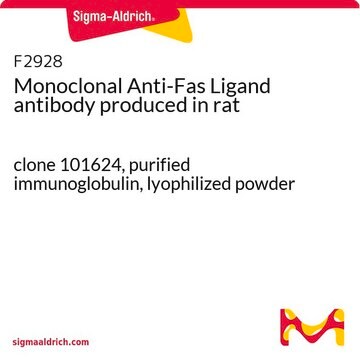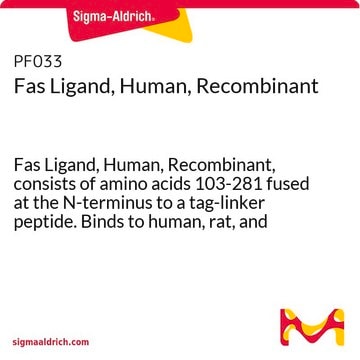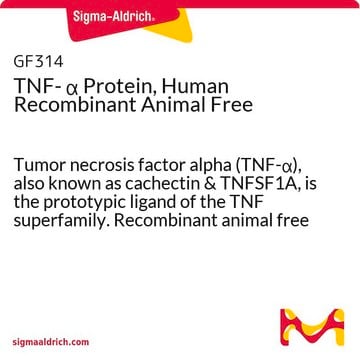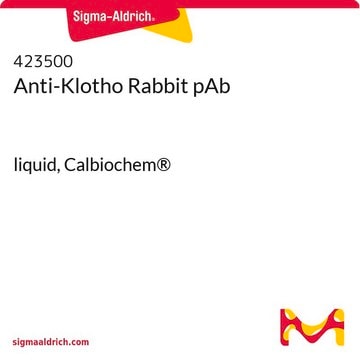341291
Kp7-6
≥98% (HPLC), lyophilized powder, Fas/FasL antagonist, Calbiochem®
Synonym(s):
Fas/FasL Antagonist, Kp7-6, H-YC*DEHFC*Y-OH, Cyclic [Cys-Cys disulfide], Kp7-6
About This Item
Recommended Products
product name
Fas/FasL Antagonist, Kp7-6, The Fas/FasL Antagonist, Kp7-6 controls the biological activity of Fas/FasL. This small molecule/inhibitor is primarily used for Cancer applications.
Quality Level
assay
≥98% (HPLC)
form
lyophilized powder
manufacturer/tradename
Calbiochem®
storage condition
OK to freeze
desiccated (hygroscopic)
protect from light
color
white
solubility
DMSO: 5 mg/mL
shipped in
ambient
storage temp.
2-8°C
General description
Biochem/physiol Actions
Fas/FasL-mediated cellular apoptotic signals
Packaging
Warning
Sequence
Physical form
Reconstitution
Other Notes
Hasegawa, A., et al. 2004. Proc. Natl. Acad. Sci. USA101, 6599.
Legal Information
Storage Class
11 - Combustible Solids
wgk_germany
WGK 1
flash_point_f
Not applicable
flash_point_c
Not applicable
Certificates of Analysis (COA)
Search for Certificates of Analysis (COA) by entering the products Lot/Batch Number. Lot and Batch Numbers can be found on a product’s label following the words ‘Lot’ or ‘Batch’.
Already Own This Product?
Find documentation for the products that you have recently purchased in the Document Library.
Our team of scientists has experience in all areas of research including Life Science, Material Science, Chemical Synthesis, Chromatography, Analytical and many others.
Contact Technical Service






